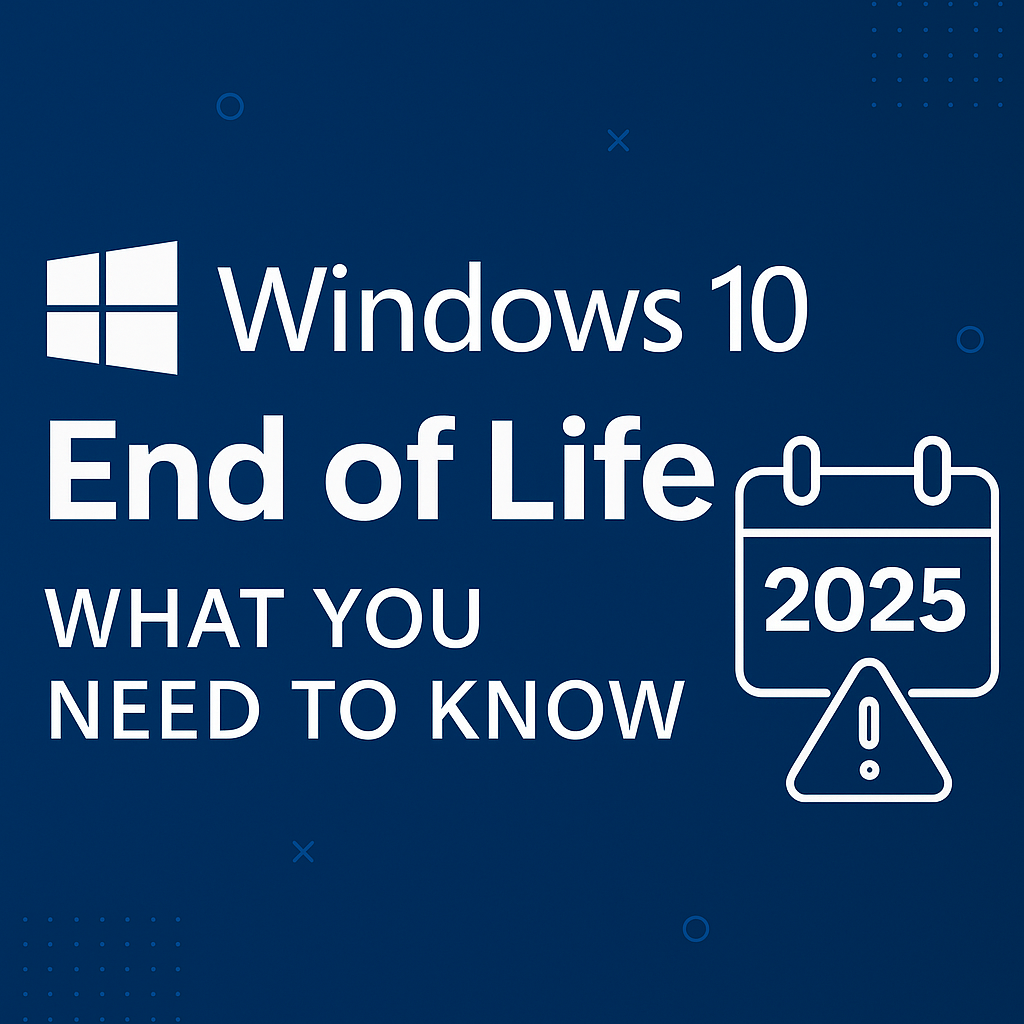Thinking About Selling Your Old Servers?
If your business has aging servers sitting idle in a data center or storage room, they’re costing you money and taking up valuable space. In 2025, selling used servers isn’t just about quick cash—it’s about freeing up resources, improving performance, and protecting your business from unnecessary risk. Below are 7 compelling reasons to sell your used servers now, plus tips on how to do it the smart way.

1. Boost Business Performance
Old servers often lack the processing power, storage speed, and security features of today’s hardware. Holding on to outdated infrastructure can slow down operations and make it harder to stay competitive. In fact, industry research shows that delaying server upgrades can cost organizations up to 39% of their peak performance capacity and massively increase maintenance costs. By contrast, modern servers deliver significant improvements: for example, new server CPUs offer 4× the performance of servers from 4–5 years ago while using barely half the energy per unit of work. Selling your older servers and reinvesting in modern equipment (with better energy efficiency, faster processing, and built-in security) can give your team an instant productivity boost.
2. Free Up Valuable Space
Even if your organization has plenty of storage, idle servers take up rack space (and draw power) without providing value. For smaller companies, old servers might even clutter closets or storage rooms. Studies have found that roughly 30% of servers in data centers are “comatose” – powered on but doing no useful work. That translates to about 10 million servers worldwide sitting idle, tying up tens of billions of dollars in wasted capital and operating costs. By selling or responsibly recycling those old servers, you free up physical space (and eliminate the electricity and cooling costs for machines that were just gathering dust). That space and budget can then be reallocated to projects that truly matter for your business.
3. Take Advantage of Tax Benefits
While selling hardware is the most direct way to recoup value, donating old servers to a qualified nonprofit can offer significant tax write-offs. In many cases, the tax deduction can exceed the resale value—especially for fully depreciated assets. U.S. tax rules allow business donors to deduct the remaining undepreciated value of donated computer equipment (individuals can deduct its fair market value). This means by donating aging servers instead of selling them for pennies on the dollar, you might net a larger benefit on your tax return. Of course, always coordinate with your finance team to ensure compliance with IRS donation and depreciation rules – but don’t overlook the potential financial upside of a well-timed tech donation.
4. Minimize Depreciation Losses
Server values drop quickly. In the secondary IT market, many servers lose a huge chunk of value each year that passes. Selling while your hardware still has market demand ensures you get top dollar before it becomes obsolete. How fast do servers depreciate? We suggest assuming roughly a 50% drop in value per year of a server’s life. In other words, a server bought two years ago might fetch only about 25% of its original price today – and even less if you wait another year. Waiting until a server dies or is too outdated often means getting next to nothing for it. By planning a hardware refresh cycle (and sell-off) every few years, you can recoup far more value to fund new equipment. The longer you hold onto aging servers, the more value you’re losing due to depreciation.
5. Improve Security & Compliance
Outdated servers are more vulnerable to ransomware, zero-day exploits, and data breaches, and they can even put you out of compliance with data regulations (such as GDPR, HIPAA, or CCPA). Older hardware often runs legacy operating systems or firmware that no longer receive security updates. For example, Microsoft ended support for Windows Server 2012 in late 2023, and any servers still running it are now exposed to over 3,100 known security vulnerabilities with no patches available. This is a serious risk—attackers actively seek out unpatched, end-of-life systems.
More broadly, studies show that unpatched software vulnerabilities are responsible for about 60% of all data breaches. By selling or decommissioning your old servers and upgrading to newer models, you’ll gain access to modern security features (e.g. hardware encryption, secure boot, TPM support) and ongoing software updates. This dramatically reduces your exposure to cyberattacks and helps safeguard sensitive data. Plus, running supported hardware/software is often necessary for compliance audits and cyber insurance coverage – avoiding hefty fines or policy violations down the line.
6. Support Sustainability & Reduce E-Waste
Responsible IT Asset Disposition (ITAD) isn’t just good for your budget – it’s good for the planet. Electronics waste (e-waste) is one of the fastest-growing waste streams in the world. 62 million metric tons of e-waste were generated globally in 2022 (an 82% increase since 2010), and that figure is only rising. Unfortunately, only about 22% of electronic waste is formally documented as recycled worldwide, the rest often ends up in landfills or unmanaged dumps, leaching toxic materials. Retiring your used servers through proper channels helps ensure they don’t contribute to this environmental problem. Many components can be refurbished or recycled for raw materials, reducing the need for new manufacturing. By partnering with a R2v3 or e-Stewards certified ITAD vendor, like exIT Technologies, you can trust that your equipment will be processed according to strict environmental and data-destruction standards. In short, selling or recycling used servers responsibly helps keep hazardous electronic waste out of landfills and aligns with your company’s sustainability goals.
7. It’s Easier Than You Think
Decommissioning and selling servers in 2025 is faster and more straightforward than ever. If the process feels daunting, rest assured there are established methods and professionals to make it smooth. You have two main options:
- Small quantities (1–5 servers): Sell directly to individuals or small businesses. Online marketplaces like Facebook Marketplace, LinkedIn groups, or IT hardware sites (e.g. ServerMonkey, Alta Technologies) make it easy to list a few servers. Even eBay has a robust used tech section (just factor in seller fees of ~15–20%). Ensure you securely wipe the drives (more on that below) and you can quickly find buyers for working used servers.
- Bulk quantities (data center decommissioning): Work with certified ITAD vendors who specialize in large-scale buybacks. These companies will handle asset valuation, secure data wiping, and logistics/removal for you. It’s often a turnkey service – they’ll audit what you have, offer a wholesale price, then pack and haul it away. (Keep in mind that selling in bulk usually means a lower per-unit price than selling individually, since the buyer is doing more work. But the convenience and guaranteed take-all offer can be worth it when you have dozens or hundreds of servers to offload.)
Overall, the market for used IT equipment is well-developed. The global IT asset disposition industry is booming – valued around $29 billion in 2025 and growing rapidly as more organizations resell and recycle their hardware. In other words, there are plenty of trusted buyers and service providers ready to help. What once seemed like a complicated, risky task is now a routine part of IT operations for many businesses. With the right partner, you can quickly recover value from old gear, protect your data, and move on to the next upgrade with minimal hassle.
Tips for Selling Servers Safely
Before you sell or ship off your used servers, keep these smart precautions in mind:
- Get an Accurate Valuation: Don’t sell yourself short. Use wholesale market data or IT marketplaces to gauge prices, and consider the specs of each server (CPU model, RAM, storage type) to estimate value. An experienced ITAD vendor can also appraise your hardware. (Remember: selling in bulk will fetch a lower per-unit price than selling individually, since you trade some value for convenience.) Knowing what your equipment is worth will help you negotiate and ensure you get a fair deal.
- Protect Your Data: Always perform a certified data wipe of any drives or storage media before you sell or recycle servers. Simply deleting files or formatting the disk is not enough—use reputable data erasure software that meets standards (or have your ITAD partner provide a certificate of data destruction). This step is critical: astonishingly, studies have found that around 42% of used drives sold online still contain recoverable sensitive data from the previous owners. You do not want your company’s data ending up in the wrong hands. Ensuring a proper wipe (or physical destruction if necessary) protects your business and complies with data privacy laws.
- Ship with Care: Servers are heavy and sensitive electronic devices. Pack them properly to avoid damage in transit. If you have the original server boxes and foam inserts, use them. Otherwise, invest in sturdy packaging: anti-static bags for components, foam or bubble wrap for cushioning, and double-wall cardboard boxes or crating for larger units. For rack-mounted servers, it’s best to strap them securely to pallets and use “tip guard” indicators on the pallet. Ensure the shipment if it’s of significant value. Taking care with shipping prevents costly disputes or returns—remember that once you’ve sold the server, you’re typically responsible for it arriving intact.
Final Word
Selling your used servers is no longer a complicated, risky process. With today’s ITAD services and online marketplaces, even a small IT team can quickly turn old equipment into cash or credit toward new tech. The key is to act while your hardware still holds value and to follow best practices (for data wiping, shipping, etc.) to protect your interests. By refreshing your infrastructure on a regular cycle, you’ll recover value, reduce risk, and keep your business running on modern, efficient systems – a win-win for your bottom line and your peace of mind. If you’re ready to start, consider getting a free, no-obligation server buyback quote from a trusted ITAD vendor and see how much your old gear is worth. Your next upgrade might be closer than you think!



